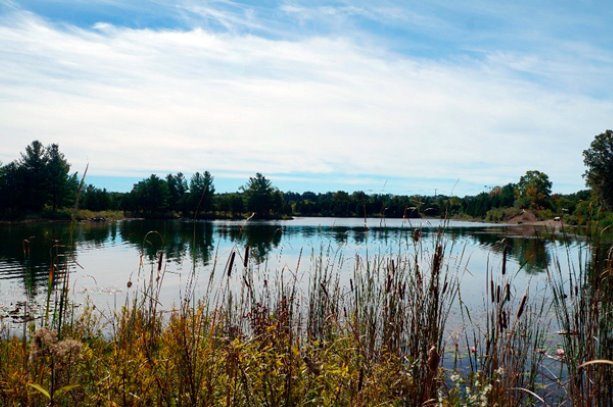The findings of a new report indicate the rehabilitation of aggregate extraction sites in Ontario has created hundreds of hectares of new aquatic habitat features.
The study, entitled Surrendered Aggregate Sites in Ontario’s Provincial Plan Areas, was conducted on behalf of the Ontario Stone, Sand and Gravel Association (OSSGA) by Skelton Brumwell and Associates Inc.
It showed that 293 hectares of aquatic habitat features have been created through the rehabilitation of surrendered aggregate sites.
"Producers have the requirement to rehabilitate their site after extraction is completed and as long as they meet the requirements under the Aggregate Resources Act (ARA), there is some flexibility in terms of what that rehab looks like," explained Ashlee Zelek, manager of environment and education with the OSSGA.
"There is the ability to create wetland habitat, which some of these producers have done. We’re showing that through the aggregate extraction and rehabilitation process that wetland and aquatic habitat was created and this is new wetland and aquatic habitats."
The purpose of the study was to use desktop methodologies to determine the amount of aquatic habitat created within the Greenbelt Plan Area including the Oak Ridges Moraine Plan Area and Niagara Escarpment Plan areas. The study was a follow-up to three other studies done between 2010 and 2013.
"We looked at 123 surrendered aggregate licenses within the plan areas and found that 55 per cent (68) of those contained some form of aquatic rehabilitation, whether it be a wetland or a pond or a combination of the two," Zelek said, adding a total of 173 aquatic features were identified and analyzed using aerial photography.
"A number of these wetlands (nine) were deemed to be part of provincially significant wetland complexes which is a classification from the Ministry of Natural Resources and Forestry. So they consider these wetlands to be of significantly more value than your average wetlands."
According to the report, aggregate rehabilitation in Ontario is mandatory. The ARA requires aggregate sites undergo progressive and final rehabilitation prior to licenses being surrendered.
The rehabilitation of aggregate extraction sites provides an opportunity to create and restore natural heritage features, including aquatic ecosystems, adds the report.
Sharon Armstrong, vice-president of communications and operations for the OSSGA, said in terms of public acceptance of aggregate, there is often a concern about what is going to happen to rehabilitated sites but the study shows the rehabilitation can mean creating better spaces.
"This is a way to demonstrate some of the great things that can come out of aggregate," said Armstrong.
"The reason that we’re doing this study is so that the public can understand what some of the after uses can be so that maybe they are not as resistant to the idea of aggregate close to market or close to where they are. From the construction industry’s point of view, we need close-to-market aggregates so that construction jobs are affordable, so that the price of aggregates remains competitive. The cost to transport aggregates from any distance is very expensive so that aggregate has to be close to market."
She added, "From our perspective, it’s really about making sure that everyone understands that we need a balance in order to meet the needs in the province."
The study recommends that additional field work and assessment of rehabilitated aquatic habitat features be undertaken to better classify and assess the ecological and social value.
"Right now we are thinking that the next step is to go out and actually assess some of these sites," explained Zelek.
"Based on aerial photography we have assessed them as wetlands and we want to actually go out to site and do a detailed assessment of some of the biodiversity and other environmental aspects of what these wetlands might offer."

The Ontario Stone, Sand and Gravel Association released a study on the creation of wetland features at former aggregate pits and quarries. The study revealed a total of 293 hectares of aquatic habitat features have been created through the rehabilitation of surrendered aggregate sites.
Photo: Ontario Stone










Recent Comments
comments for this post are closed